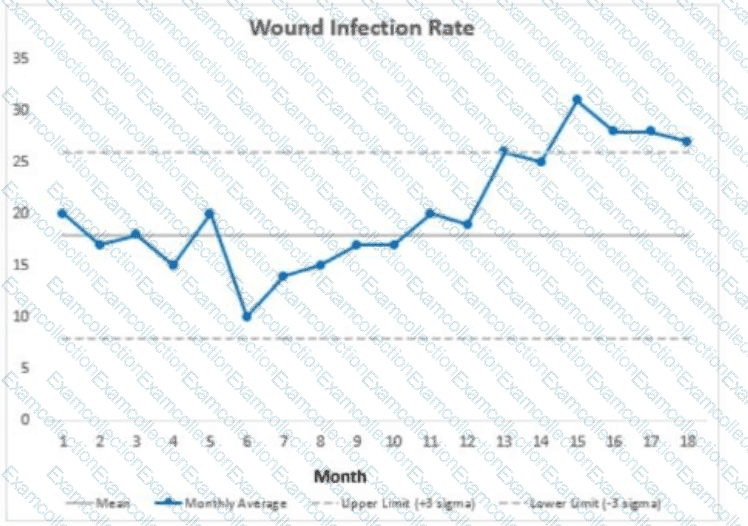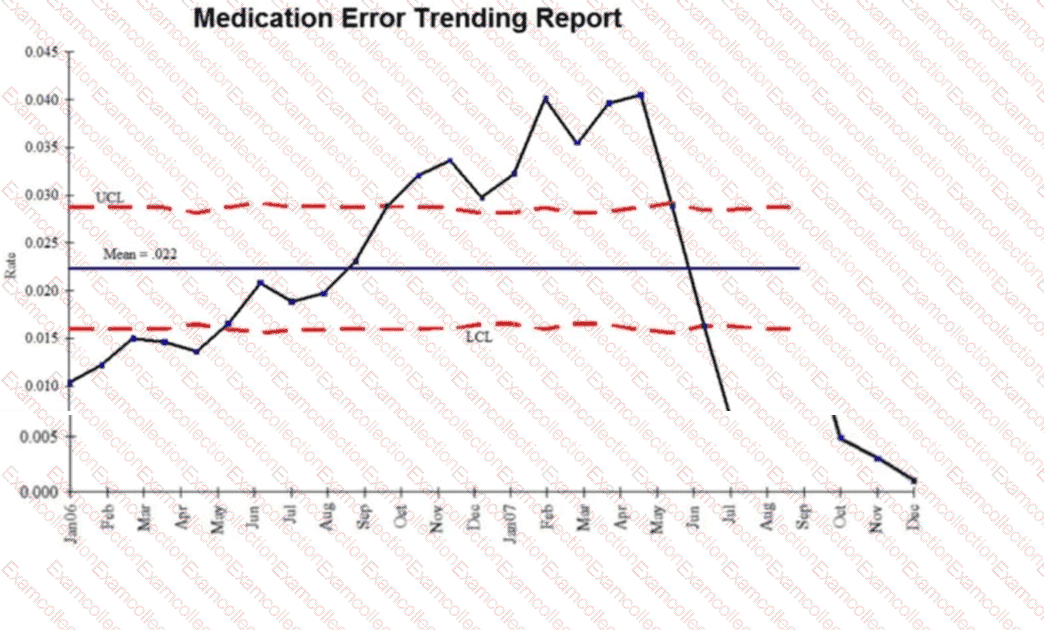NAHQ CPHQ - Certified Professional in Healthcare Quality Examination
Which of the following is a social determinant of health?
Analysis of the following wound infection rate control chart shows which of the following?

During a risk assessment, It Is noted that a unit manager and start feel there Is a high risk of aggressive patient behavior toward unit start Which of the following steps should a healthcare quality professional take first?
To integrate performance improvement with organization planning, there must be alignment between
In addition to the mean, which of the following are measures of central tendency?
Physician quality data reports for all credentialed physicians disseminated at regular Intervals, as generally mandated by accreditation standards, are called
An organization with a focus on population health may use data to
A Pharmacy and Therapeutics Committee has reviewed the following control chart for presentation to a governing body:
 Which of the following conclusions is most appropriate?
Which of the following conclusions is most appropriate?
When working with a new qualityImprovement team, the quality professional should stress the importance of
A quality professional is assessing team performance. Which of the following results would be associated when applying evaluation criteria to assess productivity?
The quality Improvement (Ql) specialist recognizes that any documents related to medical peer review are
A quality professional is conducting a root cause analysis related to a sentinel event. Which tool would be most useful to identify potential causes of the event?
Choosing a small number of items to represent characteristics of the whole is an example of
A CEO and CNO have requested a new quality initiative to reduce patient falls. One of the first steps in starting this new quality improvement initiative should include:
Members of a performance improvement team voice complaints about not having as much decision-making authority as they expected. Which of the following should be developed to decrease the likelihood of such complaints?



